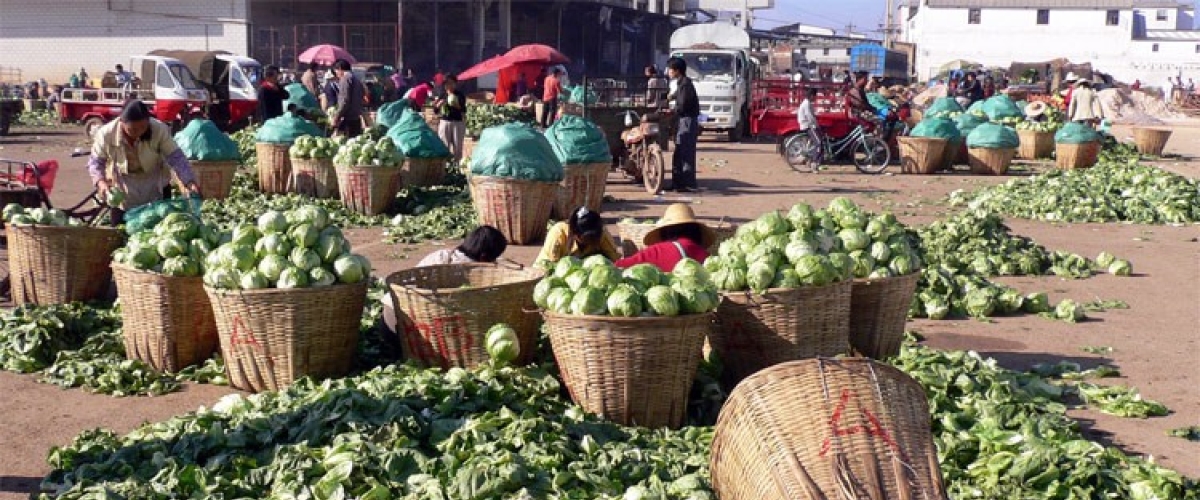
By Dr. Simon Mwale
The global population currently stands at well over 7.8 billion and is expected to reach 9.9 billion by 2050. The population of the sub-Saharan region is projected to rise from the current 1.34 billion to 2.1 billion by 2050. This rapid increase in population must be matched by a similar increase in food production, supported by effective mechanisms of making the food accessible to the people.
Currently, Southern Africa has a challenge of food security. There are many countries within the SADC region that struggle to produce and make available adequate food of acceptable nutritional quality. The reasons for the poor food security situation are many and include the broad issue of low productivity. As a result, many agricultural projects in the region have a strong focus on increasing production and productivity of agricultural systems and strengthening the agricultural value chains. In some cases, efforts have been directed at increasing food production by 50–70% to meet the rising population and demand for food.
Whereas focusing on increasing food production is a significant factor in solving the food supply challenge facing Southern Africa, other equally important factors have been neglected over the years. The reduction of post-harvest crop losses and its potential impact in improving food security has received limited attention. If duly addressed, this single action can potentially translate into a huge improvement in food availability.
It is estimated that at least 33% of the food produced globally is lost in the post-harvest phase of the value chain and therefore does not reach the table. Post-harvest losses of maize are currently estimated at 18% in SADC countries. In 2020, for example, Malawi’s maize production was estimated at almost a 2.5million metric tonnes, of which 468,000 metric tonnes were lost. During the same period, the country had 2.6 million food-insecure people.
This food is lost high up in the value chain, at the stages of threshing, drying, transportation and storage. Therefore, the loss also represents a waste of energy and resources that went into the earlier stages of the value chain. Saving the food that has already been produced makes good sense and would contribute to the improvement of food security in a significant way. The question that begs is whether it is prudent and sensible to put our effort into improving production and productivity instead of addressing post-harvest losses. Effectively managing post-harvest losses in Southern Africa would immediately increase the food available in the market by at least 18%. The impact of such an increase would significantly change the statistics of food and nutritional insecurity.
Post-harvest losses experienced in the commodity value chains are partly a result of laxity during the post-production phase. Technologies and commodity chain actors have generally ignored the value of developing and making use of effective methods of preserving, storing and handling primary products of agriculture. Even in the horticultural industry, where the products are highly perishable, the physical losses have been accepted as part of the ‘normal’ production happenings along the value chain. A shift in thinking is required.
Total elimination of post-harvest losses is not possible but reducing it to minimal levels below 6%, for instance, is possible and attainable. No wonder the African Heads of State and Governments, in 2014, committed to halve the level of post-harvest losses by 2025. At that time, the post-harvest losses for maize in the SADC countries were in the range of 16-19%. We are now only four years away from 2025, and the losses are still in the same range.
In 2025, one possible thing that could happen is to shift the target to another year in the future – to 2035, for example. What we need at this stage is a vigorous effort of tackling the challenge of post-harvest losses. This could start with conducting regular detailed surveys to generate the required details on the level of these losses and critical factors contributing to the losses.
Technologies and approaches that minimize losses could be deployed and disseminated in a targeted manner. Along with such effort, awareness, capacity development, and policy revisions could be done. Such a combination of efforts would certainly result in a significant change in the statistics of post-harvest losses as well as food security.
There is so much to gain from addressing this subject, but it is currently a giant whose potential in improving food security is yet to be tapped.
The author is the Grants and Programmes Manager at CCARDESA






